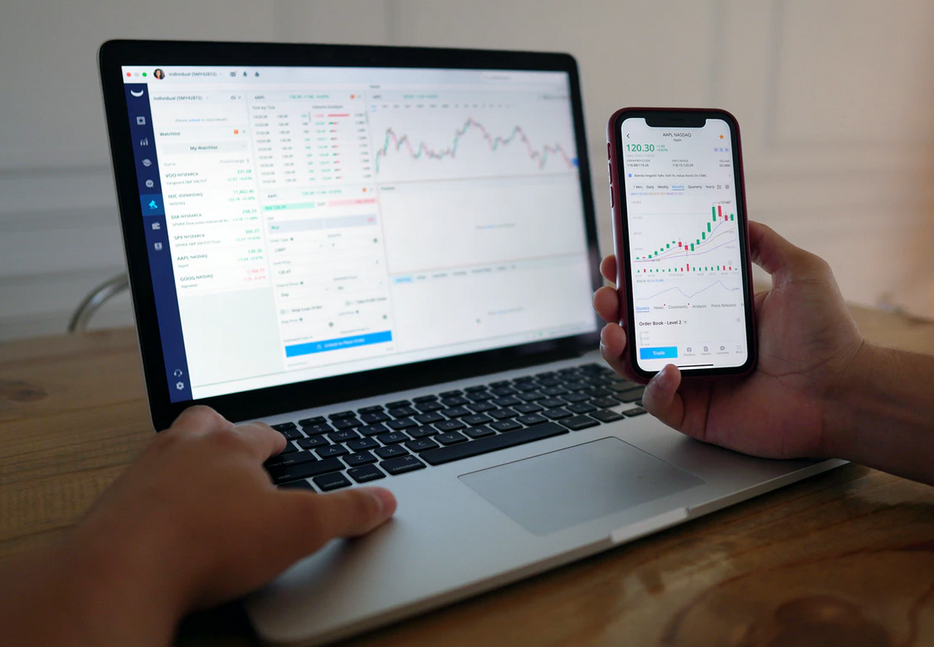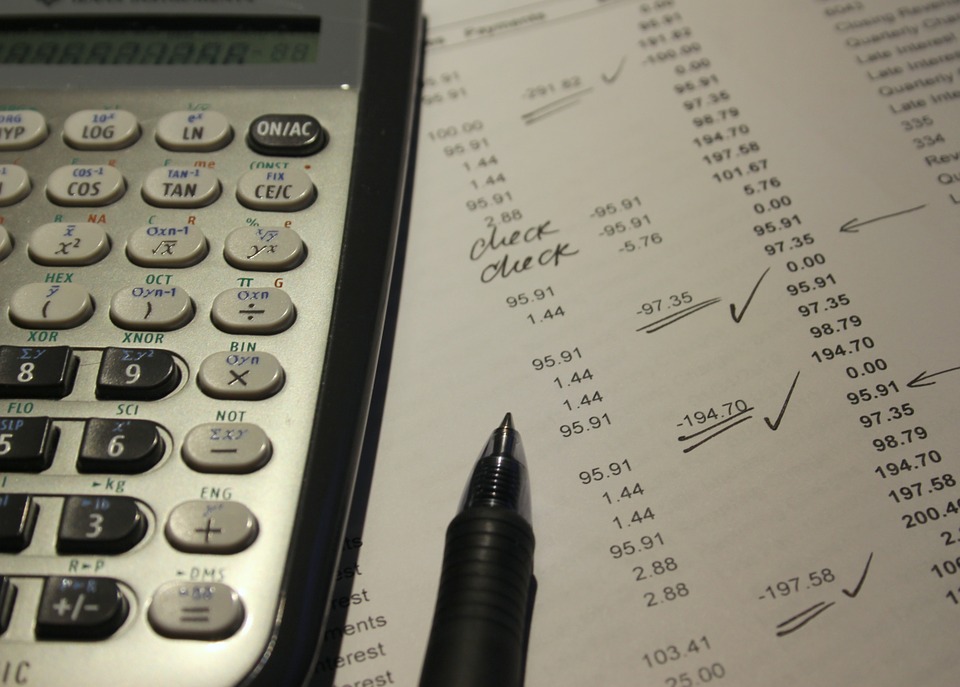Tips for Picking a Financial Advisor Who Matches Your Needs

Making informed financial decisions can feel overwhelming, especially with the abundance of investment options, retirement plans, and tax strategies available today. Many individuals struggle to identify the guidance that aligns with their personal goals, long-term vision, and risk tolerance. A well-chosen advisor can transform uncertainty into clarity, helping clients navigate complex decisions while protecting their assets and optimizing growth. By asking the right questions, evaluating credentials, and understanding how advisors operate, individuals can gain confidence in their financial journey. This article provides actionable strategies, culminating with tips for choosing a suitable financial advisor for your needs.
Verify Credentials and Experience
One of the most critical steps in selecting a financial advisor is examining their professional credentials and track record. Look for recognized certifications such as CFP (Certified Financial Planner), CFA (Chartered Financial Analyst), or CPA (Certified Public Accountant). These qualifications demonstrate formal education, adherence to ethical standards, and expertise in financial planning. Experience matters as well—advisors with a solid history of guiding clients through various market conditions are better positioned to provide reliable strategies. Checking references or reading client testimonials can also provide insight into how the advisor manages relationships and delivers results. Choosing an advisor with both credibility and experience fosters trust and confidence.
Assess Compatibility and Communication Style
Financial advising is a collaborative process that requires open communication and mutual understanding. Evaluate whether the advisor’s style matches your preferences, whether through in-person meetings, phone consultations, or digital platforms. Some clients prefer regular updates and proactive suggestions, while others favor periodic check-ins with strategic guidance. Ask about availability, responsiveness, and the typical frequency of updates. Comfort and compatibility are vital because clients who feel understood and supported are more likely to follow advice consistently. A compatible advisor also provides clarity, reducing stress and fostering confidence in decision-making.
Understand Fee Structures

Financial advisors may charge fees in multiple ways: flat fees, hourly rates, commissions, or a percentage of assets under management. Each model carries different implications for cost and potential conflicts of interest. For instance, commission-based advisors might have incentives to recommend certain products, while fee-only advisors typically offer more impartial guidance. Understanding these structures in advance allows clients to make informed decisions and avoid unexpected expenses. Requesting a detailed breakdown of fees ensures transparency and helps evaluate whether the advisor’s services provide sufficient value relative to the cost. Clear understanding of payment methods protects against misaligned expectations and unnecessary financial strain.
Evaluate Service Offerings and Specializations
Financial advisors often focus on particular areas such as retirement planning, investment management, tax strategies, or estate planning. Identifying advisors whose expertise aligns with your needs ensures that you receive targeted guidance. Discuss specific financial goals and confirm that the advisor has experience addressing similar situations. Additionally, inquire about supplementary services, such as risk management, insurance review, or college funding advice. Evaluating offerings and specialization allows clients to select advisors capable of providing comprehensive guidance relevant to their financial objectives. Matching the advisor’s capabilities with your priorities maximizes the effectiveness of the partnership.
Conduct Interviews

Before committing to an advisor, schedule interviews with multiple candidates to compare approaches, philosophies, and rapport. Prepare questions about investment strategies, past performance, conflict-of-interest policies, and contingency plans during economic downturns. Ask how the advisor tracks progress and measures success. Observing their responses provides insight into transparency, professionalism, and problem-solving skills. This step also allows clients to gauge personal comfort and trust, which are crucial for long-term financial relationships. Conducting thorough interviews ensures a well-informed decision, helping to select an advisor who will provide consistent, effective, and goal-oriented guidance.
Choosing a financial advisor is a pivotal step in managing personal finances effectively. Verifying credentials, understanding fees, assessing compatibility, evaluating specializations, and conducting interviews are practical strategies that help clients make informed decisions. By taking these steps, individuals can form productive partnerships with advisors who align with their goals, values, and long-term objectives. A careful selection process not only promotes financial security but also encourages disciplined planning and growth. Thoughtful consideration and proactive engagement in selecting an advisor empower clients to optimize financial outcomes while maintaining confidence and peace of mind throughout their financial journey.…


 Branding is not just a buzzword; it’s a cornerstone of success for financial firms. In an industry where trust is paramount, how your brand is perceived can make all the difference. Creating a strong brand identity helps to differentiate your firm from competitors. It’s about more than just logos and color schemes. It encompasses values, mission, and the experience you offer clients. For financial firms, effective branding communicates reliability and expertise. well-crafted brand narrative fosters that sense of confidence.
Branding is not just a buzzword; it’s a cornerstone of success for financial firms. In an industry where trust is paramount, how your brand is perceived can make all the difference. Creating a strong brand identity helps to differentiate your firm from competitors. It’s about more than just logos and color schemes. It encompasses values, mission, and the experience you offer clients. For financial firms, effective branding communicates reliability and expertise. well-crafted brand narrative fosters that sense of confidence. Investing in a branding agency can be a transformative step for financial firms looking to establish trust and credibility. These professionals understand the nuances of the industry and know how to effectively communicate your unique value proposition. By leveraging their expertise, you can create a strong brand identity that resonates with your target audience. A well-executed branding strategy not only enhances your visibility but also fosters lasting relationships with clients.…
Investing in a branding agency can be a transformative step for financial firms looking to establish trust and credibility. These professionals understand the nuances of the industry and know how to effectively communicate your unique value proposition. By leveraging their expertise, you can create a strong brand identity that resonates with your target audience. A well-executed branding strategy not only enhances your visibility but also fosters lasting relationships with clients.…
 The first step in building a diversified portfolio is to assess your financial goals. Understand what you want to achieve, whether it’s retirement savings, buying a home, or funding education. Next, evaluate your risk tolerance. Are you comfortable with high-risk investments that may yield higher returns? Or do you prefer stability and gradual growth? This will guide your choices moving forward. Once you’ve established these parameters, start selecting different asset classes.
The first step in building a diversified portfolio is to assess your financial goals. Understand what you want to achieve, whether it’s retirement savings, buying a home, or funding education. Next, evaluate your risk tolerance. Are you comfortable with high-risk investments that may yield higher returns? Or do you prefer stability and gradual growth? This will guide your choices moving forward. Once you’ve established these parameters, start selecting different asset classes. Regularly review your portfolio to ensure it aligns with your financial goals. Life changes, and so do investment needs. An annual check-up can keep you on track. Rebalance periodically. Market fluctuations can skew your asset allocation over time. Adjusting helps maintain your desired level of risk and diversification. Stay informed about market trends and economic conditions.
Regularly review your portfolio to ensure it aligns with your financial goals. Life changes, and so do investment needs. An annual check-up can keep you on track. Rebalance periodically. Market fluctuations can skew your asset allocation over time. Adjusting helps maintain your desired level of risk and diversification. Stay informed about market trends and economic conditions.



 A Gold IRA, or Individual Retirement Account, is an excellent way to save for retirement. It allows you to invest in
A Gold IRA, or Individual Retirement Account, is an excellent way to save for retirement. It allows you to invest in  Saving for retirement requires a long-term approach. It is essential to plan for the future, no matter your age. Setting aside money each month can help to ensure that you have enough saved when it comes time to retire. Additionally, investing in stocks and bonds can provide the additional growth needed to help your savings grow over time. Taking the time to create a retirement plan today will help ensure that you have enough saved for the future.
Saving for retirement requires a long-term approach. It is essential to plan for the future, no matter your age. Setting aside money each month can help to ensure that you have enough saved when it comes time to retire. Additionally, investing in stocks and bonds can provide the additional growth needed to help your savings grow over time. Taking the time to create a retirement plan today will help ensure that you have enough saved for the future.
 Whether or not a payday loan is right for you will depend on your individual circumstances. If you need cash fast and don’t have any other options, then a payday loan might be your best choice. However, if you can wait a few days or weeks to get the money you need, then you might be better off taking out a personal loan from a bank or credit union.
Whether or not a payday loan is right for you will depend on your individual circumstances. If you need cash fast and don’t have any other options, then a payday loan might be your best choice. However, if you can wait a few days or weeks to get the money you need, then you might be better off taking out a personal loan from a bank or credit union.
 One of the first things you should consider before selecting a trading platform is security. It is essential to note that you will give your important financial and personal information to a website. There has been a lot of concern regarding data security when dealing with online platforms. Since you are giving sensitive information, you must ensure it will be safe.
One of the first things you should consider before selecting a trading platform is security. It is essential to note that you will give your important financial and personal information to a website. There has been a lot of concern regarding data security when dealing with online platforms. Since you are giving sensitive information, you must ensure it will be safe. The second factor you should consider when selecting an online Forex trading platform is the total costs you will have to meet. One of the primary reasons why you want to trade in Forex is to make more money. It will make no sense when you lose money because of the trading costs that a platform charge. You must consider the amount of money you are comfortable paying for trading costs.
The second factor you should consider when selecting an online Forex trading platform is the total costs you will have to meet. One of the primary reasons why you want to trade in Forex is to make more money. It will make no sense when you lose money because of the trading costs that a platform charge. You must consider the amount of money you are comfortable paying for trading costs. The last factor to consider before choosing a trading platform is the reviews. Make a point of doing some research to learn more about a platform. Most Forex trading platforms claim to be the best, but this is not always the case. Reading online reviews will be crucial in knowing if a platform is genuine or not. You should also check online ratings.
The last factor to consider before choosing a trading platform is the reviews. Make a point of doing some research to learn more about a platform. Most Forex trading platforms claim to be the best, but this is not always the case. Reading online reviews will be crucial in knowing if a platform is genuine or not. You should also check online ratings.
 Gold has always played a fundamental role during cases of “inflation” or when the price of the cost of living increases. Historically, in fact, its value has gone hand in hand with the rise in prices while, on the other hand, equities have always suffered from inflation.
Gold has always played a fundamental role during cases of “inflation” or when the price of the cost of living increases. Historically, in fact, its value has gone hand in hand with the rise in prices while, on the other hand, equities have always suffered from inflation.
 need to do your own research. At the end of the day, you are going to
need to do your own research. At the end of the day, you are going to 
 Musicians can get a good platform by starting their YouTube channels. Besides enabling them to make money with their music, the musicians can earn some cash teaching free music lessons. The idea is to get such video tutorials attract a ton of viewers and having monetized them, the musicians can make significant amounts of money.
Musicians can get a good platform by starting their YouTube channels. Besides enabling them to make money with their music, the musicians can earn some cash teaching free music lessons. The idea is to get such video tutorials attract a ton of viewers and having monetized them, the musicians can make significant amounts of money. Most musicians derive great pleasure from performing live to an audience as they also
Most musicians derive great pleasure from performing live to an audience as they also 

 Any loan is not the best option for your financial woes. If there are other means to get you out from your financial distress, then accruing loans should be the last resort. Have you tried reaching out to all your friends and family? Have you tried seeking help from your boss if the company you are working for can allow you to get a portion of your salary in advance? If all these fail, then you have to apply for an emergency loan.
Any loan is not the best option for your financial woes. If there are other means to get you out from your financial distress, then accruing loans should be the last resort. Have you tried reaching out to all your friends and family? Have you tried seeking help from your boss if the company you are working for can allow you to get a portion of your salary in advance? If all these fail, then you have to apply for an emergency loan. Not All Holiday Tax Loans Are the Same
Not All Holiday Tax Loans Are the Same
 Learn Every Day
Learn Every Day
 The essence of teamwork is that there are more sane minds and able bodies to share in the workloads. Teamwork delegates accountability to a certain group of people thus, making all those in the group feel important.
The essence of teamwork is that there are more sane minds and able bodies to share in the workloads. Teamwork delegates accountability to a certain group of people thus, making all those in the group feel important. When you are resourceful, you do not need to go far and wide to search for the resources that you need. Look around at your company. The right person to do a task may just be in your roster of employees. Know how to appreciate the abilities of your employees, and they will give their all to please you. Assign responsibilities that they can do.
When you are resourceful, you do not need to go far and wide to search for the resources that you need. Look around at your company. The right person to do a task may just be in your roster of employees. Know how to appreciate the abilities of your employees, and they will give their all to please you. Assign responsibilities that they can do.


 Get Skills from Working in an Agency
Get Skills from Working in an Agency



 If you have heard of transactional accounts or demand accounts, then you may also have heard of a checking account. That is because transactional accounts and demand accounts are some other names that you can call checking accounts. A checking account differs from other types of bank accounts. It is a deposit account that is accommodated at a financial institution that authorizes unlimited deposits and numerous withdrawals.
If you have heard of transactional accounts or demand accounts, then you may also have heard of a checking account. That is because transactional accounts and demand accounts are some other names that you can call checking accounts. A checking account differs from other types of bank accounts. It is a deposit account that is accommodated at a financial institution that authorizes unlimited deposits and numerous withdrawals. Before opening a checking account, there are several features that you need to put into consideration. Some of the features that you need to keep in mind before you apply to open a checking account are the fees, the overdraft protection, interest as well as the service charges. Other than that, you should also consider their abilities to provide you with features and benefits that are beneficial and conveniently available to you. These features include direct deposit, electronic funds transfer, automatic teller machines, and cashless banking.…
Before opening a checking account, there are several features that you need to put into consideration. Some of the features that you need to keep in mind before you apply to open a checking account are the fees, the overdraft protection, interest as well as the service charges. Other than that, you should also consider their abilities to provide you with features and benefits that are beneficial and conveniently available to you. These features include direct deposit, electronic funds transfer, automatic teller machines, and cashless banking.…

 Companies and governments operate on a quarterly basis. This means that they stop and check whether their expenditure is in tandem with the projected gains. A financial calendar gives them the impetus to know whether they should make adjustments for them to meet the overall annual goals. You can follow in their tracks and develop a personal financial calendar with targets and objectives of what you need to do within a given period. It follows that you will do whatever it is that you do for a living with a progressive plan in mind and this is how people rise from the gutter to the peak.
Companies and governments operate on a quarterly basis. This means that they stop and check whether their expenditure is in tandem with the projected gains. A financial calendar gives them the impetus to know whether they should make adjustments for them to meet the overall annual goals. You can follow in their tracks and develop a personal financial calendar with targets and objectives of what you need to do within a given period. It follows that you will do whatever it is that you do for a living with a progressive plan in mind and this is how people rise from the gutter to the peak.
 The federal government offers two types of loans namely the subsidized and unsubsidized loans. These come at great rates. However, they have one major drawback: they are too little to cover for your entire university education. This will force you to look for other means to fund your education.
The federal government offers two types of loans namely the subsidized and unsubsidized loans. These come at great rates. However, they have one major drawback: they are too little to cover for your entire university education. This will force you to look for other means to fund your education.


 Looking at the size of the coin supply will also help you to determine its suitability. Dig further to find out the size of investor’s tokens. This will help you to determine if the coin can stand the test of time. Factors such as inflation can also help to judge whether it is a good investment. The most important part when it comes to coin supply is to find out how easy it will be for the coin to be manipulated by the investors and its founders. Usually, the big investors can dilute it meaning that the value will go down.
Looking at the size of the coin supply will also help you to determine its suitability. Dig further to find out the size of investor’s tokens. This will help you to determine if the coin can stand the test of time. Factors such as inflation can also help to judge whether it is a good investment. The most important part when it comes to coin supply is to find out how easy it will be for the coin to be manipulated by the investors and its founders. Usually, the big investors can dilute it meaning that the value will go down.


 This is another key benefit that comes with outsourcing your accounting department. Accounting tasks can be tough and energy sapping. As such, this might limit your productivity in other tasks. Moreover, having an keep training and retraining people into your accounting departments. To avoid wasting time on things that are not do necessarily fall within your area of specialization, outsourcing your financial department leaves with adequate time to focus on what matters.
This is another key benefit that comes with outsourcing your accounting department. Accounting tasks can be tough and energy sapping. As such, this might limit your productivity in other tasks. Moreover, having an keep training and retraining people into your accounting departments. To avoid wasting time on things that are not do necessarily fall within your area of specialization, outsourcing your financial department leaves with adequate time to focus on what matters.

 Because there is a huge demand for photography out there, you might want to put this profitable option into consideration especially if you have the skills and talent in photography. This is a valuable skill to have and a chance to make some extra cash. Weddings, holidays, birthday parties and so forth are some common events that require photography services.…
Because there is a huge demand for photography out there, you might want to put this profitable option into consideration especially if you have the skills and talent in photography. This is a valuable skill to have and a chance to make some extra cash. Weddings, holidays, birthday parties and so forth are some common events that require photography services.…

 Your financial advisor should have direct access to the top holdings of where your investments are. He or she should be in a position to inform you immediately what the earnings report is anytime you ask for them. At the very least, your financial advisor should be able to provide you with knowledge regarding your holdings before any assets or investments. By being educated about the available options and what assets are invested, you will be in a position to better understand what the consultant suggests.…
Your financial advisor should have direct access to the top holdings of where your investments are. He or she should be in a position to inform you immediately what the earnings report is anytime you ask for them. At the very least, your financial advisor should be able to provide you with knowledge regarding your holdings before any assets or investments. By being educated about the available options and what assets are invested, you will be in a position to better understand what the consultant suggests.…


